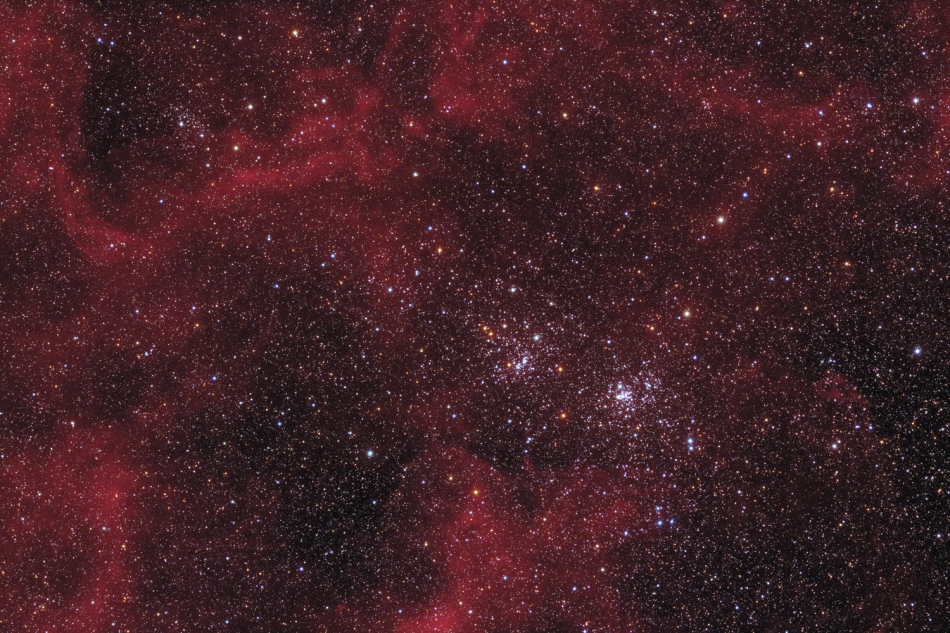JANUARY 23, 2014
Double Cluster in Perseus
EXPLANATION
This lovely starfield spans some seven full moons (about 3.5 degrees) across the heroic northern constellation of Perseus. Just right of center it holds the famous pair of open or galactic star clusters, h and Chi Persei. Also cataloged as NGC 869 (right) and NGC 884, both clusters are about 7,000 light-years away and contain stars much younger and hotter than the Sun. Separated by only a few hundred light-years, the clusters are both 13 million years young based on the ages of their individual stars, evidence that they were likely a product of the same star-forming region. Always a rewarding sight in binoculars, the Double Cluster is even visible to the unaided eye from dark locations. Not seen in binoculars though, and not often depicted in telescopic images of the region are faint clouds of reddish ionized hydrogen gas found throughout this remarkable cosmic skyscape. A color composite, the image includes narrowband data to enhance emission from the hydrogen clouds. Visible toward the upper left of the wide field of view is another, smaller open star cluster, NGC 957, also of similar age, distance, and possibly related to the more famous Double Cluster in Perseus.
Image Credit & Copyright


